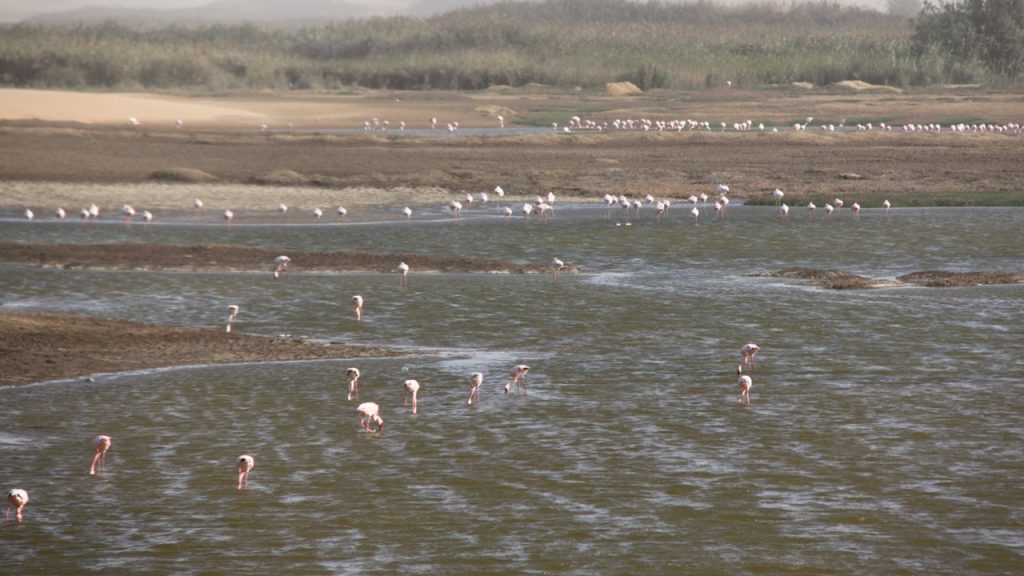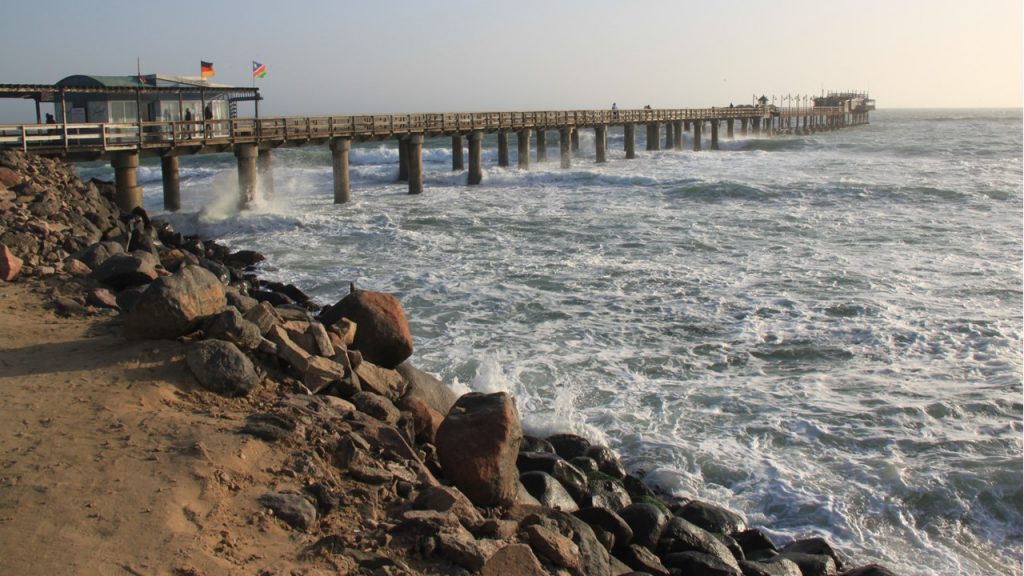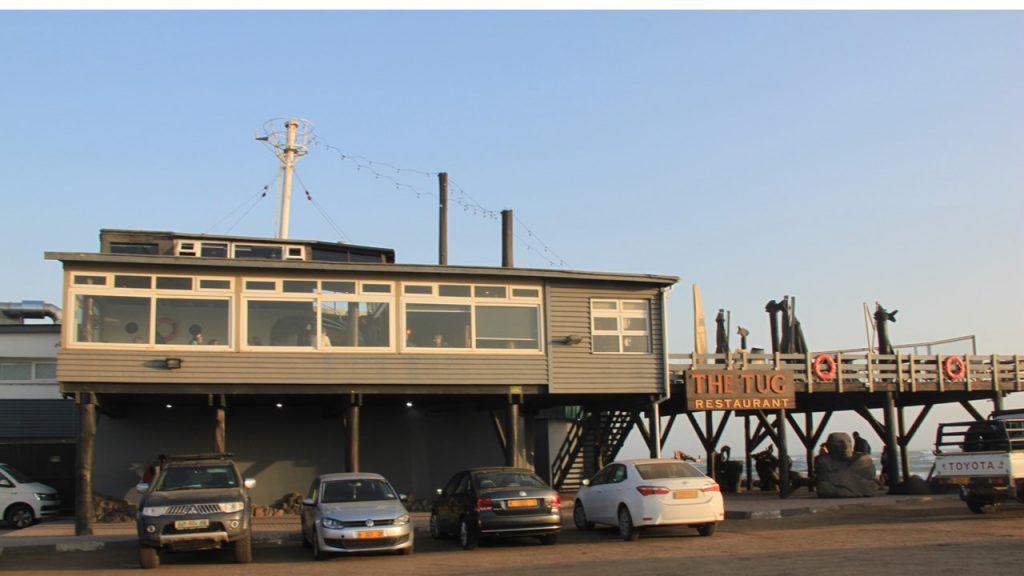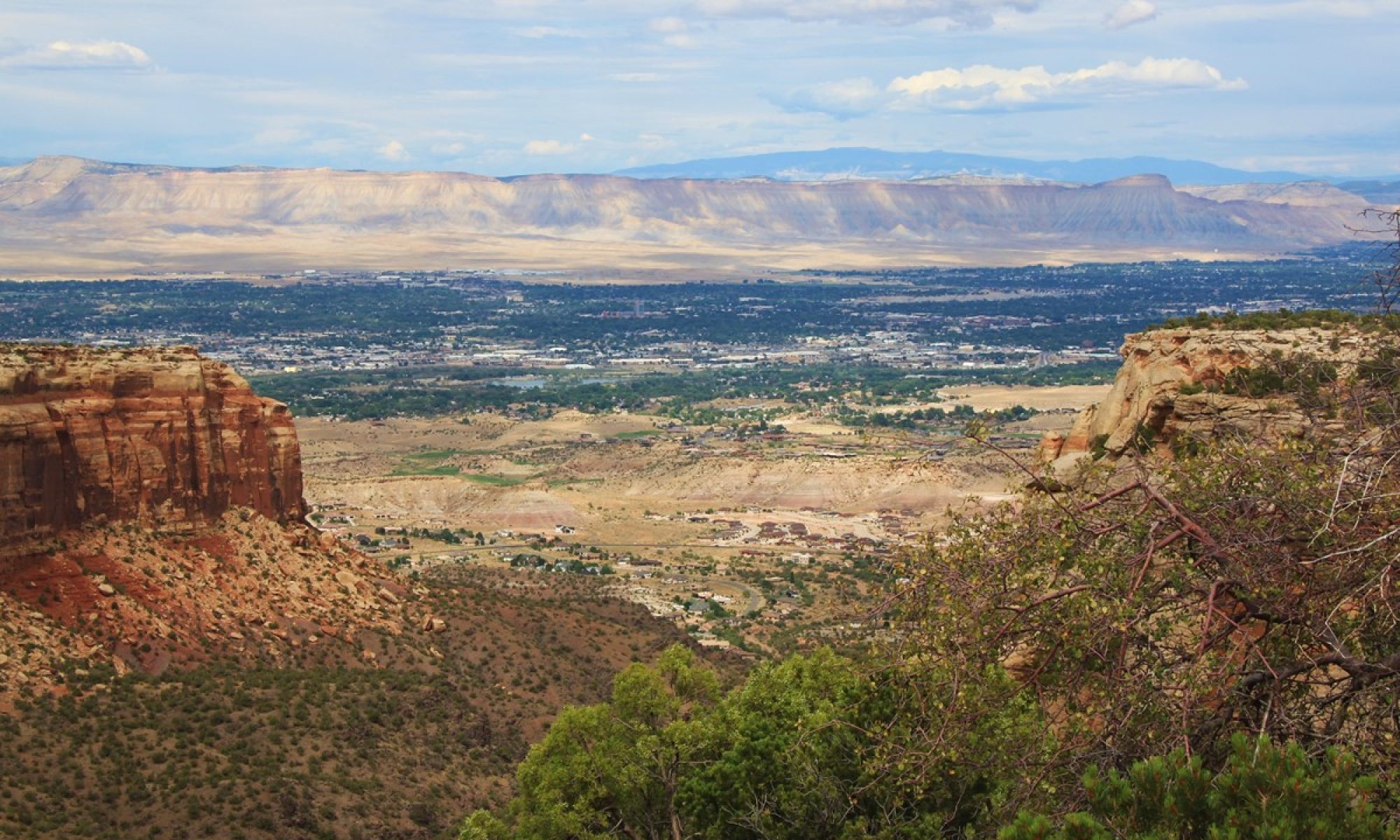Exploring the Winter Deserts
Part 2: Exploring the Namib Desert
After filling our vehicle with diesel at Bette, we headed north to the Serium Gate of the Namib Taukluft National Park. Soon after, we arrived at the park’s Dead Valley Lodge just in time for lunch. At the park, we have reserved a tented chalet for one night. After settling in, we headed for an afternoon scenic drive to the Sossusvlei Pan and the Namib Desert’s red dunes. The Namib Desert is the oldest desert in the world, and this area of it is a UNESCO world heritage site with a dedication monument in the park. We drove 50-plus kilometers passing hundreds of enormous sand dunes that are named and numbered. On the west side of the valley, the dunes were yellow-gray, but on the east side they were red! We stopped at Dune 45 for pictures and then climbed the dune at Deadlvei claypan. Here, 900-years ago, the dunes migrated across the local river and cut off its flow, leaving a small pan of forested ground to dry up. The areas of dead forests remain there, frozen in time. In order to see the “Dead Valley”, we walked over a mile before climbing a large red dune. The dunes here are over 125 meters tall. After returning to the vehicle, we then drove to the Sossusvlei area of the desert among the giant red dunes to watch the sunset and enjoy gin and tonics and nibbles. Jonas was our guide and on the return to the hotel we saw an oryx, springbok, and a jackal, entering the park just as the Park’s gates closed for the night. Back at the lodge, we had grilled eland and grilled lamb ribs for dinner. Then we went to our tented chalet to prepare for our 5am hot air balloon ride in the morning.
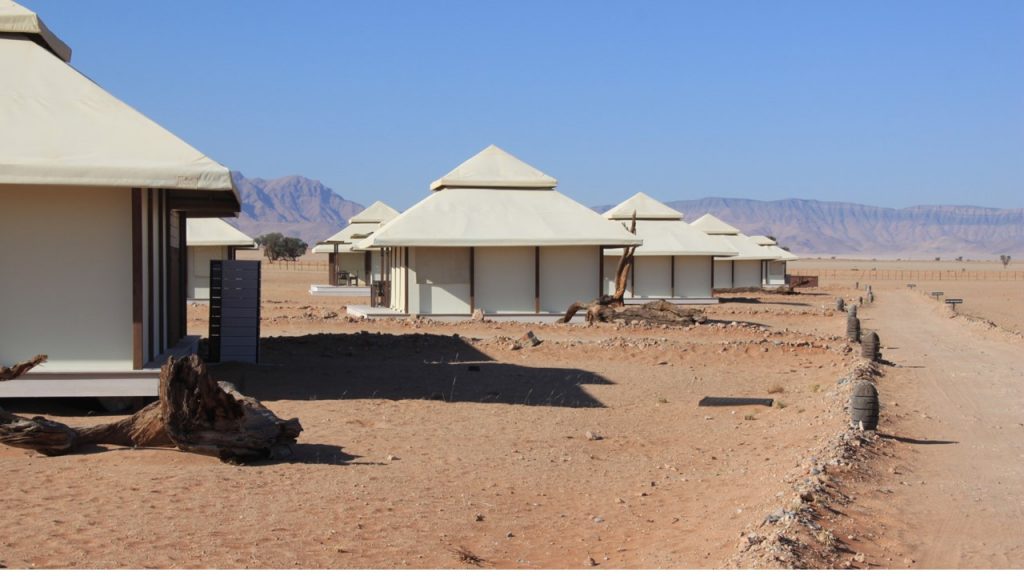
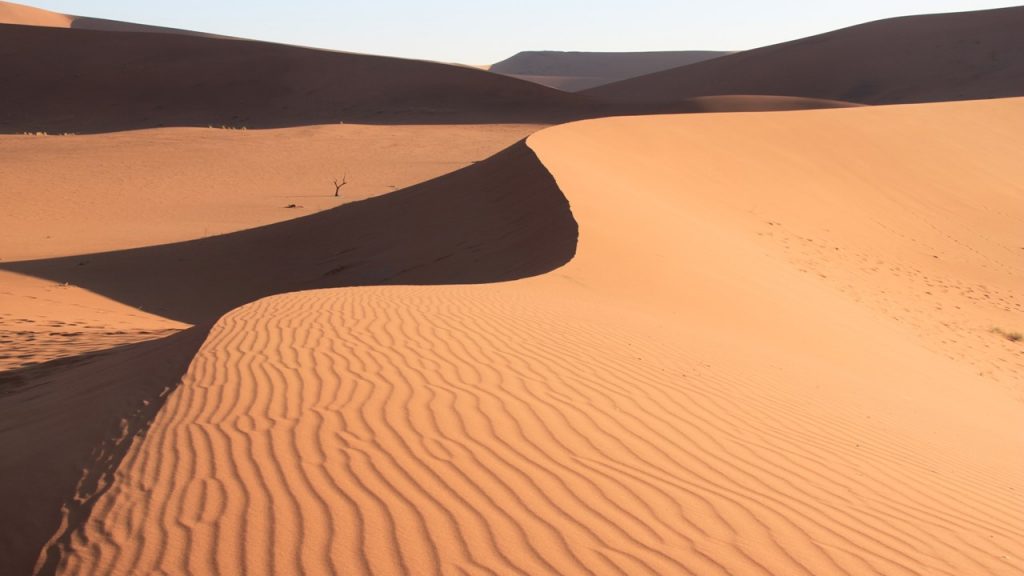
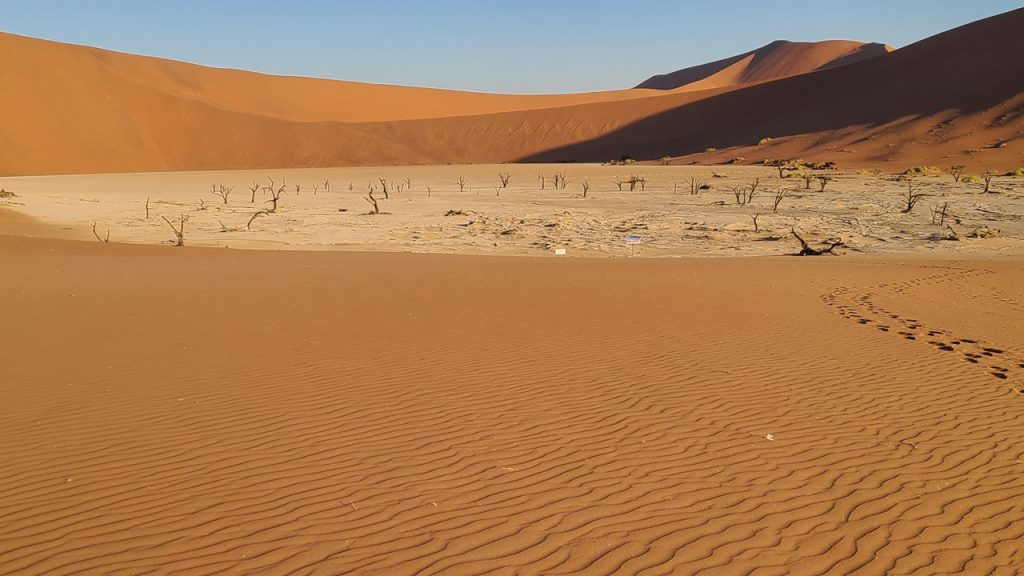
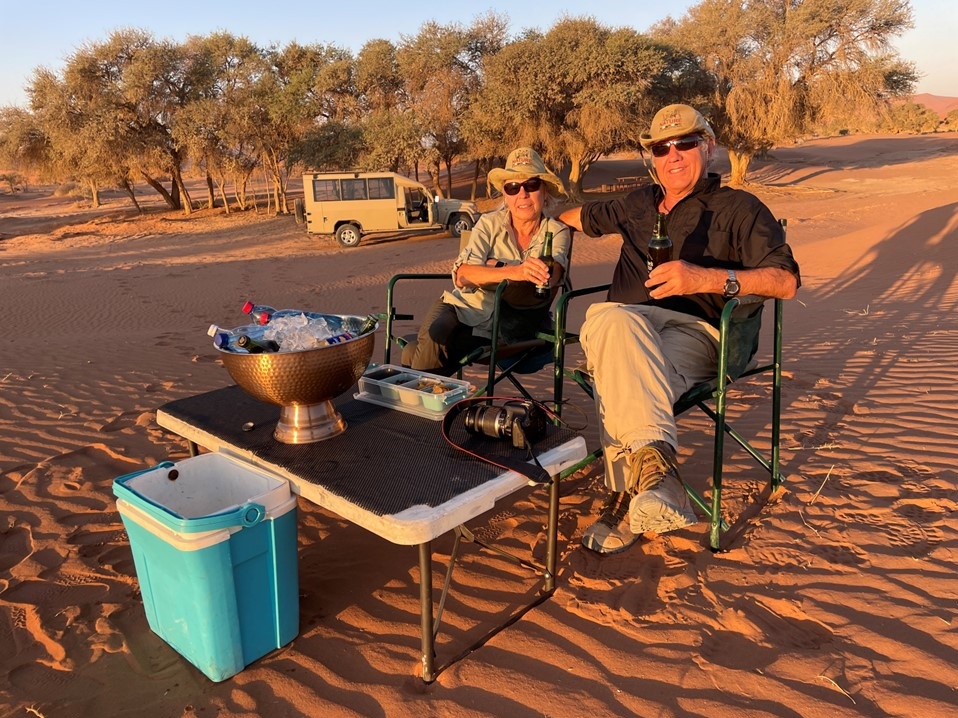
Saturday morning we rose at 4:00am to pack and travel 35km to the site for our hot air balloon launch. Unfortunately, the camp had suffered a power failure during the night and we accomplished this in the dark with only cell phone lighting. We left our luggage there since we would be returning later to check-out, and we then drove to exit the park. However, the park’s gates were closed until 6:00am, and we needed to honk our horn to wake the guard to be able to leave. We traveled in the dark to a sign by the roadside that indicated where to turn, and we arrived at Namib Sky Balloon Safaris, where 56 of us gathered to ride on 4 balloons set to take-off at sunrise. We were ferried to a flat, open field where the balloons were assembled and inflated, before boarding the basket and rising above the earth. It was a quiet, gentle ride where the topography looked other-worldly. Below, we could see ostriches and springboks. Our pilot would adjust our direction by changing the height of the balloon and entering different air currents that move in different directions as a function of altitude. The ballooning company owns considerable areas adjoining the park, but the intent is always to land the balloon on or near a road to make recovery earlier and to minimize offroad vehicular travel. Our pilot, Paul, does one better and lands the balloon’s basket on the trailer of the balloon recovery vehicle. Simply amazing. Our balloon ride is followed by a champagne breakfast in the desert, including: coffee, tea, and champagne, home-made breads ,jams, muffins , and croissants, eggs, yogurt, and even zebra meat and game sausage. While eating breakfast, a curious jackal, and even a few springboks, came to see what was going on.


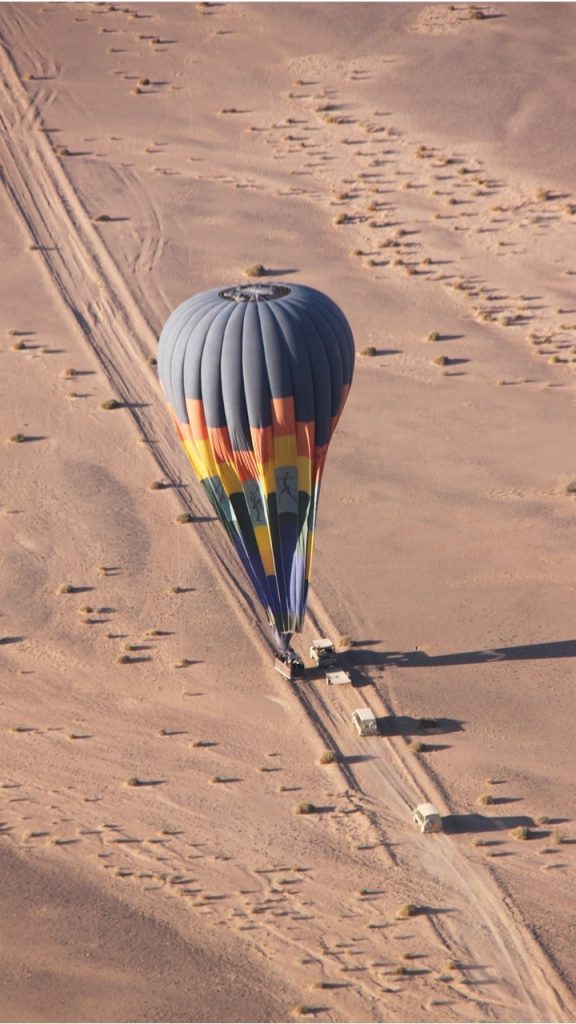
We returned to our car, headed to the park gate to pay our park fees, and check out of the hotel before we start 360+ kilometers on gravel roads, (some good and some very, very bad), through the National park to the coastal town of Swakopmund, a small, old German fishing town. Just before Swakopmund at the town of Walvis, we passed some local brine estuaries that were filled with pink flamingoes. But, on the way there, a weather front came through and a driving sand-storm impacted the last 30km of our trip. Finally, we checked into a small guesthouse located just 2-blocks from downtown and from the ocean. From there, we bundled-up and walked downtown to do some window shopping. We then walked to the beach, where it was high tide with high waves and high winds. The temperature was rapidly dropping as we stopped at “The Tug” for dinner. The Tug is an old tug boat that has been turned into a bar and restaurant at the beach-end of the town’s pier. The bar had personality and the food was delicious. After dinner, we headed back to the guesthouse to get ready for tomorrow’s 400+km drive to the remotest destination on the Skeleton Coast – Shipwreck Lodge in the Skeleton Coast National Park.
